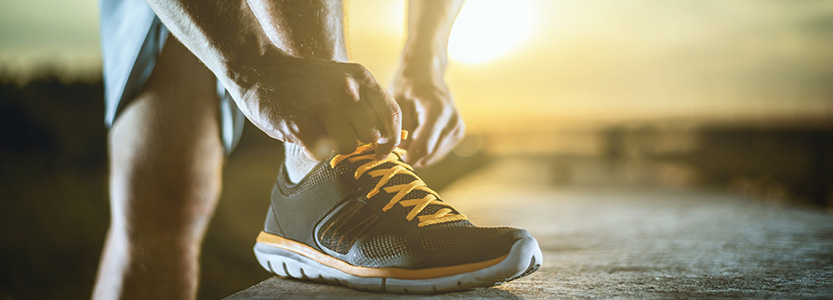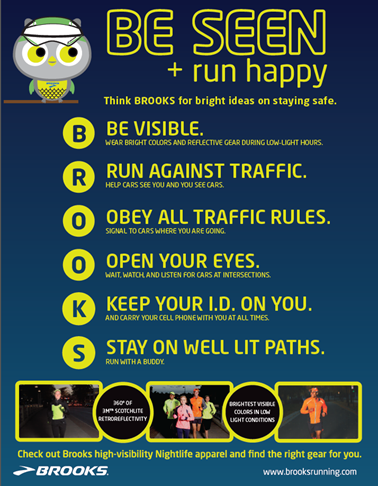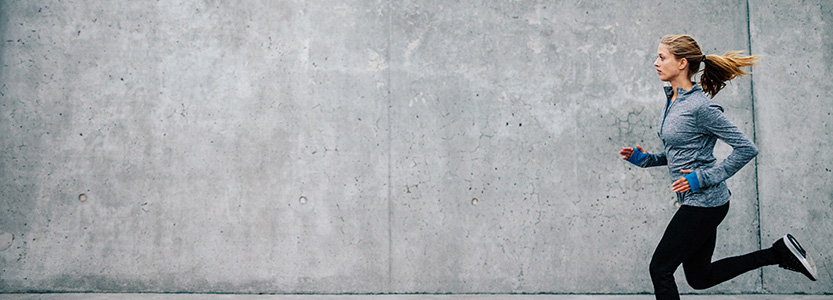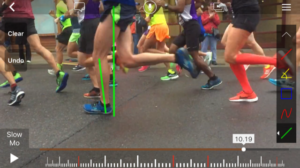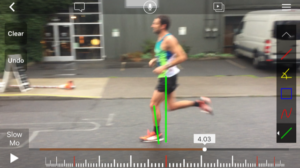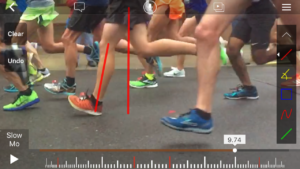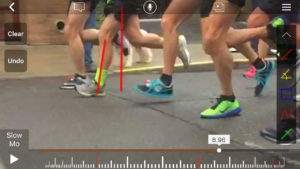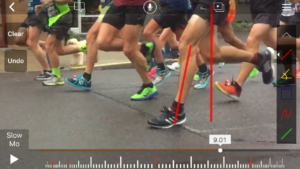Original Article By hvmn.com
Table of Contents
Supplements for Runners From Training to Recovery
The goal of exercise is to break the body down. Yes, you read that correctly.
Looking back at our evolutionary biological roots, when we put our bodies through difficult situations, we wanted them to adapt–maybe to go for longer without food, maybe so we could detect a smell that told us certain berries were poisonous, maybe to jump higher to reach fruit in a tree.
Whatever the goal, we always had to fall short the first few attempts. Adaptation took failure, centuries of bodily breakdowns (and lucky DNA mutations) before our primordial ancestors developed the physical tools they needed to survive.
When we exercise, this happens on a much shorter timeline (hopefully). We put our bodies through strenuous activity with the goal of being stronger from it. In reasonable amounts, this cycle of stress and regeneration is normal and good and pushes our bodies to grow.
But in high amounts, the stress put on our bodies through can be detrimental.
That’s where supplements come in. You’ve no doubt heard the long list of the best supplements and what they can do for overall health: whey protein for recovery, magnesium for bone health, branched-chain amino acid for muscle-building. Each supplement targets a different need and together, they can have holistic benefits in all aspects of training and recovery. Most target either acute performance boosts or long-term health benefits.
We’ve gathered some of the best supplements for training, race day and recovery to incorporate into your everyday training regimen.
Scientific research is a good launchpad when choosing supplements. But it can be hard to find a definitive answer; sports studies are limited, and most are conducted on well-trained young men (so if that’s not you, it’s hard to conceptualize those results).
One of the most important considerations is the personal subjective experience when using a supplement: How do you feel? How are your training times? How are energy levels outside of training?
Of course, there are objective, numerical tests that aim to measure the effect of supplements. But many athletes rely on the subjective approach–those intangible feelings of motivation or energy–instead of tracking performance metrics to see if a supplement is working.
Science supporting supplement use is aplenty (and of varying quality), but remember some effects will be subjective.
Training Supplements
Training isn’t finished when those running shoes are untied. There are big gains in performance to be had by looking at training comprehensively, which should include considerations for diet and its impact on bone health and muscle mass.
In training, supplements help whole body health, working together to build a body on race day that’s ready for peak performance.
For Muscles: BCAAs
Muscle building isn’t usually a top priority for runners, but it’s essential for keeping those legs strong. Many runners enter a calorie deficit, which can trigger the loss of muscle mass–but BCAAs provide the body with building blocks to maintain muscle mass.
Branched-chain amino acids, commonly referred to as BCAAs, are a type of essential amino acid, meaning the body cannot produce them–they must be obtained through protein-rich food or supplementation. BCAAs include leucine, isoleucine, and valine. Other essential amino acids include histidine, lysine, methionine, phenylalanine, threonine and tryptophan.
The body produces non-essential amino acids; they’re “non-essential” because it’s not essential to consume them through diet–the body makes them. They include alanine, asparagine, aspartate, cysteine, glutamate, glutamine, glycine, proline, serine and tyrosine.
The body breaks down protein into amino acids, which are absorbed and transported throughout the body like bricks on a conveyor belt, sent to create new proteins and build houses of muscle.
Other benefits of BCAA include protein synthesis (from a study on rats) and alleviated skeletal muscle damage (from a study on humans).
Many BCAA supplements combine the three types of BCAAs: leucine, isoleucine, and valine. Try the Do Vitamins BCAA Supplements, which are free of animal byproducts and fillers, or the Bulk Supplements BCAA powder.
For Bones and Joints: Glucosamine
and Vitamin D
For runners, joints can be one of the first things to go after countless hours of pounding feet on pavement. Creaky knees are a familiar but unpleasant sound.
Glucosamine is the supplement of choice here; it’s a natural compound found in cartilage, the all-important tissue cushioning joints. Made from chains of sugars and proteins bound together, glucosamine can be made synthetically, but can also be harvested from the shells of shellfish.
Possessing a natural anti-inflammatory property, glucosamine is used to treat arthritis and osteoarthritis. The body needs glucosamine to help synthesize proteins and fats that form important tissues (chief among them cartilage) and helps form fluids that provide joints with lubrication. Glucosamine is like the body’s WD-40.
There are several kinds of glucosamine, but most supplements feature glucosamine sulfate. Over a three-year period, one study found that long-term treatment with glucosamine sulfate slowed the progression of knee osteoarthritis (osteoarthritis is the most common form of arthritis). Glucosamine sulfate also had a greater influence in reducing joint pain during function and daily activities, one study found.
We suggest the Schiff glucosamine tablets, which contain MSM–a source of sulfur important in the formation of collagen in joints, vital for its support of structural cartilage; the Bluebonnet vegetarian glucosamine also contains MSM.
In conjunction with glucosamine, Vitamin D is a powerful supplement to improve bone health.
Vitamin D and calcium have a complementary relationship: Vitamin D helps our bodies effectively absorb calcium and phosphorus, strengthening our bones and muscles. The easiest way to get Vitamin D is through sunlight, spurring our skin to synthesize the hormone (but remember to avoid too much sun); it can also be garnered via some foods like salmon, milk, cheese and egg yolks.
Vitamin D is important because runners’ bones take a beating, but interestingly for most, running actually builds bone health (one study found that impact and resistance training in female breast cancer survivors combatted bone loss).
In healthy people, bones respond to stress by reforming to better handle that stress, in what’s called Wolfe’s Law. For runners, that means bones in the spine and legs, which are exposed to constant stress, should generally be stronger than in non-runners.
Kado-3, a super-charged omega-3 by HVMN, maximizes the effects of Vitamin D with Vitamin K, as they work together to protect bone health.
Race Day Supplements
Supplements consumed on race day should work acutely, giving runners quick performance boosts to hopefully shave seconds off their times.
For Energy: Caffeine and Carbohydrates
Caffeine is the classic runner’s supplement, providing quick energy in an easily consumable fashion. We have been using it since the Stone Age, chewing the seeds or bark or leaves of certain plants to affect fatigue and awareness.
Caffeine works like this: as countless neurons fire throughout the day, a neurochemical called adenosine builds up. The nervous system uses receptors to monitor the body’s adenosine levels, and as the day progresses, more adenosine passes through those receptors (making us tired). Caffeine is the same size and shape of adenosine; it attaches to the A1 receptor and when docked, adenosine molecules can’t enter.
Studies have shown that caffeine intake improves exercise performance while also decreasing the perception of pain. However, there’s a genetic split in response to caffeine: for some, it could actually make performance worse. Best try it before race day to ensure it’s right for you.
Along with caffeine, carbohydrates and carb-loading have been other race day staples for runners. Things like pasta, bagels, rice and other high-carb foods are often used as fuel before starting a race. During races, the most common are gels and energy drinks.
Carbs eaten pre-race are stored as glycogen in the muscles and liver, while carbs eaten during the race will be directly burned.
Glycogen is the body’s most readily-available fuel, powering racers through early miles. But when those carbs run out? Body–meet wall.
Ketone esters like HVMN Ketone can also provide an alternate fuel source for the body; your muscles will first burn ketones, saving glycogen stores for later in the race (more on this below).
But you can also produce ketones while on a ketogenic diet. Recently there has been more interest in training with a ketogenic low-carb diet to achieve a body adapted to use fat and ketones as a fuel. Runners following this diet showed a huge boost in fat burning capacity, and there were positive effects of a ketogenic diet on endurance in animal experiments. But there isn’t any conclusive evidence of increased performance in humans (maybe because other changes to metabolism cancel out the increase in fat burning capacity that occurs on the keto diet).
For Buffering: Sodium Bicarbonate and Nitrate
Turns out baking soda isn’t just for baking–the supplement, called sodium bicarbonate, is used to provide athletes with a boost during sessions of intense exercise. Essentially, it protects the body against acidity.
We’ve discussed lactate previously; during periods of intense anaerobic exercise, lactate accumulates as a result of rapidly burning carbohydrate when the demand for energy is high, and oxygen availability is low. It’s often associated with muscle fatigue but it’s actually the acidic hydrogen proton attached to lactate that’s to blame. When our blood becomes acidic during intense exercise, the brain triggers nausea in the hope of decreasing activity level and thus allowing the body to recycle lactate and regulate blood pH.
Sodium bicarbonate is able to bind the protons that cause acidity, thus reducing overall change in blood pH during exercise. It can potentially provide resistance against fatigue caused by acid accumulation from intense exercise, especially for intense exercise lasting up to seven minutes.
Sodium bicarbonate should be taken about 60 – 90 minutes before exercise, at about 200mg – 300mg. While it mostly comes in powder form, there’s also a gel (Topical Edge) you can use that helps to reduce the risk of stomach upsets caused by the salty sodium bicarb drink.
Also on race day, in the early morning darkness of warm-up hours, you might see fellow runners downing shots of beetroot juice. They’re trying to get nitrates–which were once villainized by association with processed meat in the 1960s.
Nitrates trigger vasodilation (the dilation of blood vessels), which allows more oxygen to be delivered to the muscles. It’s a molecule produced by the body in small quantities, but is mostly obtained by eating vegetables; chief among them is beetroot juice, but spinach, arugula, turnips and even dark chocolate (as this study in cyclists found) can also be good sources of nitrate.
The benefits of nitrate peak at about two or three hours post-ingestion, so a morning smoothie (with spinach, mint, arugula, celery and beetroot juice) on race day might be the best way to get the necessary nitrates before the race kicks off.
Research suggests that beetroot juice can also help reduce blood pressure, and taking about 5-8 mM of inorganic nitrate may positively influence physiological response to exercise.
Recovery Supplements
Ever felt completely gassed hours after an intense workout? Maybe you aren’t approaching muscle recovery correctly.
The goal of any type of recovery is to put your body in the best possible position to accomplish more intense workouts in the following days. Exercise is cyclical; tending to those worn-down muscles can be the first step to fueling your next run.
For Replenishment: Protein–Whey and Casein and Soy
Protein is just for weightlifters, right? Absolutely not. Both runners and weightlifters seek to slow the catabolic process of muscle breakdown and kickstart the anabolic process of building muscle.
Post-exercise, muscle enzymes are like construction workers on standby–ready to build but needing the right tools to do it.
So in the two or three hours after a workout, protein can repair muscle damage, reduce the response from cortisol and speed glycogen replacement. High protein availability accelerates resolution of muscle inflammation and promotes muscle-building after training. But there are several different types of protein supplements (which usually come in the form of protein powders) to choose from. Whole foods chock-full of protein include: chicken, eggs, milk, yogurt, and beans.
“After challenging sessions when I know I’ve really worked my muscles, I make sure to have protein right away. Giving your muscles what they need to rebuild is key to locking in performance gains. For me and many others, protein makes me feel less sore in the days following a hard session, so I can get back out there and do it again.”Michael Brandt, HVMN co-founder and avid triathlete
Whey protein–which you may recognize from milk and cheese–is a great source of BCAAs, which can aid in muscle protein resynthesis (specifically, the BCAA leucine). What’s more, whey is also absorbed the fastest out of this list of proteins. It’s largely considered the most effective type of protein for muscle protein synthesis. There have also been studies showcasing the weight loss benefits of protein.
We recommend Muscle Feast Grass Fed Whey Protein for its absence of additives and artificial ingredients. Also try Myprotein Impact Whey Isolate, which contains over 90% protein and 1% fat. For athletes or highly-active people who want to build lean muscle mass while attempting to lose body fat, about 1g of protein per pound of body weight per day is a good target. Less athletic / active people should aim for 0.45 – 0.69g per pound of body weight daily.
For longer-term recovery, try casein protein–it composes about 80% of the protein from milk, and takes hours to absorb. You can leverage both casein and whey protein but they should be used differently; whey for immediate recovery, casein for long-term muscle building.
One interesting use of casein protein is taking it before bed. Since muscles enter a catabolic state while you sleep (read: since you’re fasting, your muscles are eating themselves), casein can help lessen and delay this process because it takes longer to digest.
Casein protein releases a steady stream of amino acids that slow the digestive process; one study showcased consuming it before bed led to a 34% reduction in protein breakdown.
The other type of protein isn’t milk-based; it’s soy protein, which is made from soybeans. A good source of amino acids, it’s the choice for many vegetarian or vegan athletes. There’s also protein made from peas, brown rice, and hemp for those allergic to soy.
Since the science of soy protein points to be less effective than milk-based proteins, we recommend staying away from this form of plant-based protein.
For Soreness: Fish Oil and polyphenols
When people talk about taking fish oil, they’re seeking omega-3 fatty acids, hoping to prevent inflammation; they’re a key nutrient all runners should have in their diets. Inflammation can come in many forms, from muscle soreness, to joint pain, to heart disease to autoimmune diseases. While acute inflammation can be good for our bodies to encourage health, chronic inflammation can detrimental.
The two main fatty acids in omega-3 fish oils are docosahexaenoic acid (DHA) and eicosapentaenoic acid (EPA). These can block inflammation pathways in the cell.
Studies suggest omega-3s can help alleviate inflammation. Research has also shown that fish oil supplementation helped subjects decrease airway inflammation (during exercise, airways can narrow and thus restrict airflow) and improve post-exercise lung function by 64%.
The US Department of Health suggests about 250mg of fish oil daily, but in one study, the American Heart Association gave patients four grams daily and saw benefits in heart health.
Kado-3, by HVMN, is a supercharged krill and fish oil stack designed to assist daily brain and body metabolism. Ingredients in Kado-3 work together; like astaxanthin oil (a powerful antioxidant) to fight against the buildup of free radicals, and Vitamins K and D to protect bone health. Kado-3 compounds the beneficial effects of Vitamin D and omega-3 fatty acids on the brain and body.
Hard training sessions can lead to sickness; bolstering the body’s immune system with polyphenol and antioxidants is important to keeping up training over the long-haul.
Polyphenols are another supplement for reducing inflammation, a category of chemicals naturally found in plants. While the idea of polyphenol benefits isn’t new, research has only begun to be conducted on the subject. Many of the health benefits associated with polyphenols are connected to these substances being antioxidants, which are known to combat cell damage.
A great source of polyphenol is tart cherries. Animal tests suggest they’ve been effective in reducing inflammatory and oxidative stress signaling in rat cells. For athletes, the data is less conclusive; still, polyphenol supplementation can increase the capacity to quench free radicals. But it’s an exciting area of research, especially in regards to muscle micro-damage.
Look to things like cherries, blueberries, or green tea to help reduce the possibility of exercise-induced illness.
HVMN Ketone: Superfuel for Training, Race Day and Recovery
Look at the list of supplements above; few traverse all situations for runners, from training day to race day to recovery day.
HVMN Ketone, the world’s first ketone ester, is being used by elite performers in sport and military. It’s so unique partially because its applications for endurance sport are so broad.
For Training and Race Day
Ketones are a fundamentally different fuel source from carbohydrates and fats that cells typically use for energy; in fact, your body will preferentially burn ketones over carbs.
Professional cyclist, Vittoria Bussi will be attempting to break “The Hour” record using HVMN Ketone as fuel.
“The first time I tried HVMN Ketone in training, a 50-minute time trial felt like 30 minutes. I was so focused and had much more energy in my legs. The combination of mental lucidity and extra physical energy was strong and effective.”Vittoria Bussi
When taken before or during exercise, D-BHB (the ketone body in HVMN Ketone) is 28% more efficient than carbohydrates alone, helping your body do more work with the same amount of oxygen. In one study, cyclists went ~2% further in a 30-minute time trial.
For Recovery
Athletes of all levels can benefit from making improvements to their recovery protocol. Those using HVMN Ketone have seen a decrease in the breakdown of intramuscular glycogen and protein during exercise when compared to carbs alone.
It also expedited the resynthesis of glycogen by 60% and boosted the signals for protein resynthesis by 2x when added to normal carb / protein post-workout fuel. D-BHB from HVMN Ketone acts as an anti-inflammatory recovery tool, helping reduce exercise-induced oxidative stress from the buildup of free radicals that can cause damage to the cells.
Supplements for Runners: A Holistic Approach
Everyone from ultramarathon endurance athletes, to speed specialists, to casual after-work 5k runners can benefit from introducing the right supplements into their diet.
While some supplements are still in the early stages of research, things like amino-acids, protein and caffeine have been decades-long staples for runners–but it’s always especially important to supplement nutrients the body needs but can’t produce naturally (looking at you, omega-3).
When there is more pressure on your training, mile times start going down, training volume goes up and recovery time gets shorter. Maybe then it’s time to begin introducing more advanced and targeted supplements and testing with newer, elite technology like HVMN Ketone.
We suggest researching and then testing out what works for you–everyone is different. Also don’t forget to pay attention to the macronutrient composition of your diet, sleep quality and other health barometers when introducing supplements. Start with some of the basics like BCAAs, protein, Vitamin D and fish oils, gauging how you feel. Remember, continued use of these supplements over a period of weeks often yields the best results; don’t expect to notice the difference from one Vitamin D pill.
Don’t Get Left in the Dust
We’re developing training guides for athletes, focusing on supplements, dieting, and training to help you get to the next level. Be the first to know when they’re published.
Karl Kolbeck is a physical therapist and along with his wife Sasha they own Rose City Physical  Therapy located in NW Portland. He’s been practicing for 25 years with specialties in treating the shoulder as well as runners. Karl is dual board certified in both orthopedic and sports clinical specialties, is certified in manual and manipulative therapy and is a fellow of the American Academy of Orthopedic Manual Physical Therapists. He teaches rehab based continuing medical education courses to physicians, physical therapists and athletic trainers across the nation. He and his staff are involved with multiple running groups in the Portland metro area, offering educational sessions and athlete screenings. Karl also provides care for the Bowerman Track Club Nike professional running team based in Portland.
Therapy located in NW Portland. He’s been practicing for 25 years with specialties in treating the shoulder as well as runners. Karl is dual board certified in both orthopedic and sports clinical specialties, is certified in manual and manipulative therapy and is a fellow of the American Academy of Orthopedic Manual Physical Therapists. He teaches rehab based continuing medical education courses to physicians, physical therapists and athletic trainers across the nation. He and his staff are involved with multiple running groups in the Portland metro area, offering educational sessions and athlete screenings. Karl also provides care for the Bowerman Track Club Nike professional running team based in Portland.


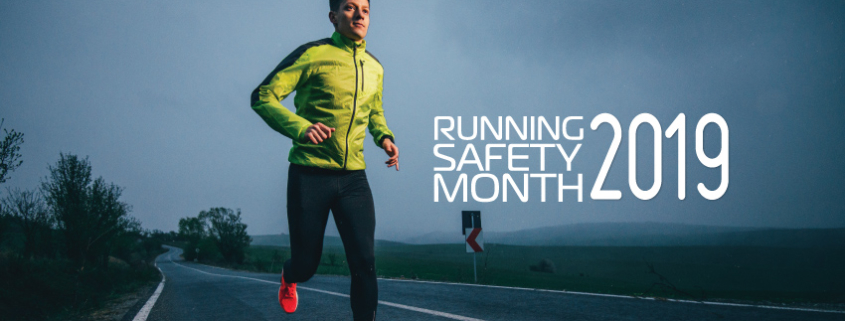






 Therapy located in NW Portland. He’s been practicing for 25 years with specialties in treating the shoulder as well as runners. Karl is dual board certified in both orthopedic and sports clinical specialties, is certified in manual and manipulative therapy and is a fellow of the American Academy of Orthopedic Manual Physical Therapists. He teaches rehab based continuing medical education courses to physicians, physical therapists and athletic trainers across the nation. He and his staff are involved with multiple running groups in the Portland metro area, offering educational sessions and athlete screenings. Karl also provides care for the Bowerman Track Club Nike professional running team based in Portland.
Therapy located in NW Portland. He’s been practicing for 25 years with specialties in treating the shoulder as well as runners. Karl is dual board certified in both orthopedic and sports clinical specialties, is certified in manual and manipulative therapy and is a fellow of the American Academy of Orthopedic Manual Physical Therapists. He teaches rehab based continuing medical education courses to physicians, physical therapists and athletic trainers across the nation. He and his staff are involved with multiple running groups in the Portland metro area, offering educational sessions and athlete screenings. Karl also provides care for the Bowerman Track Club Nike professional running team based in Portland.